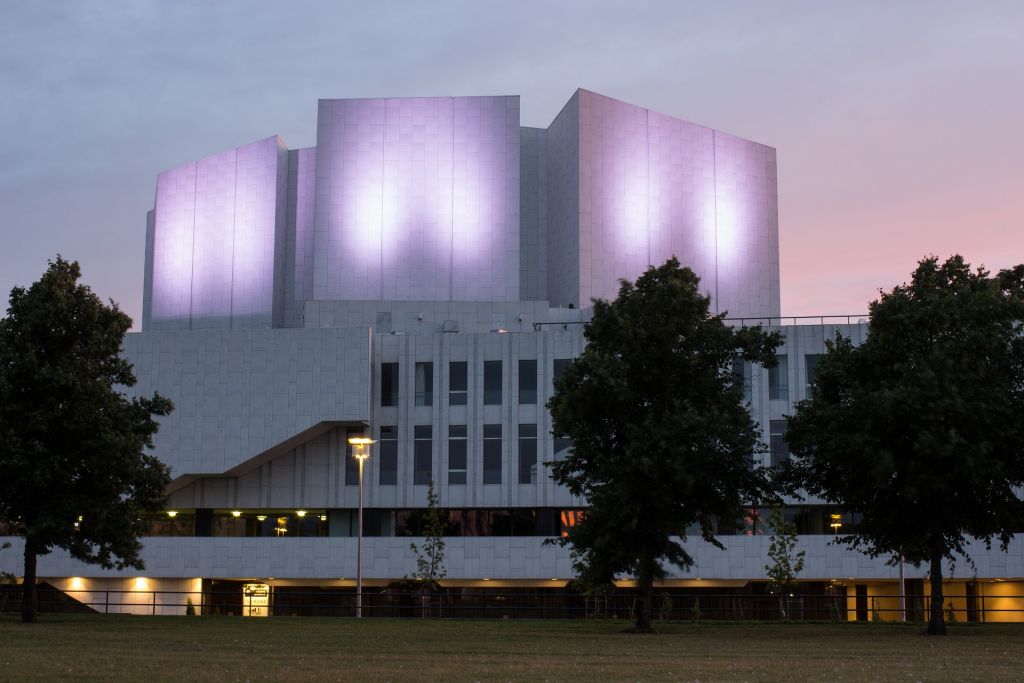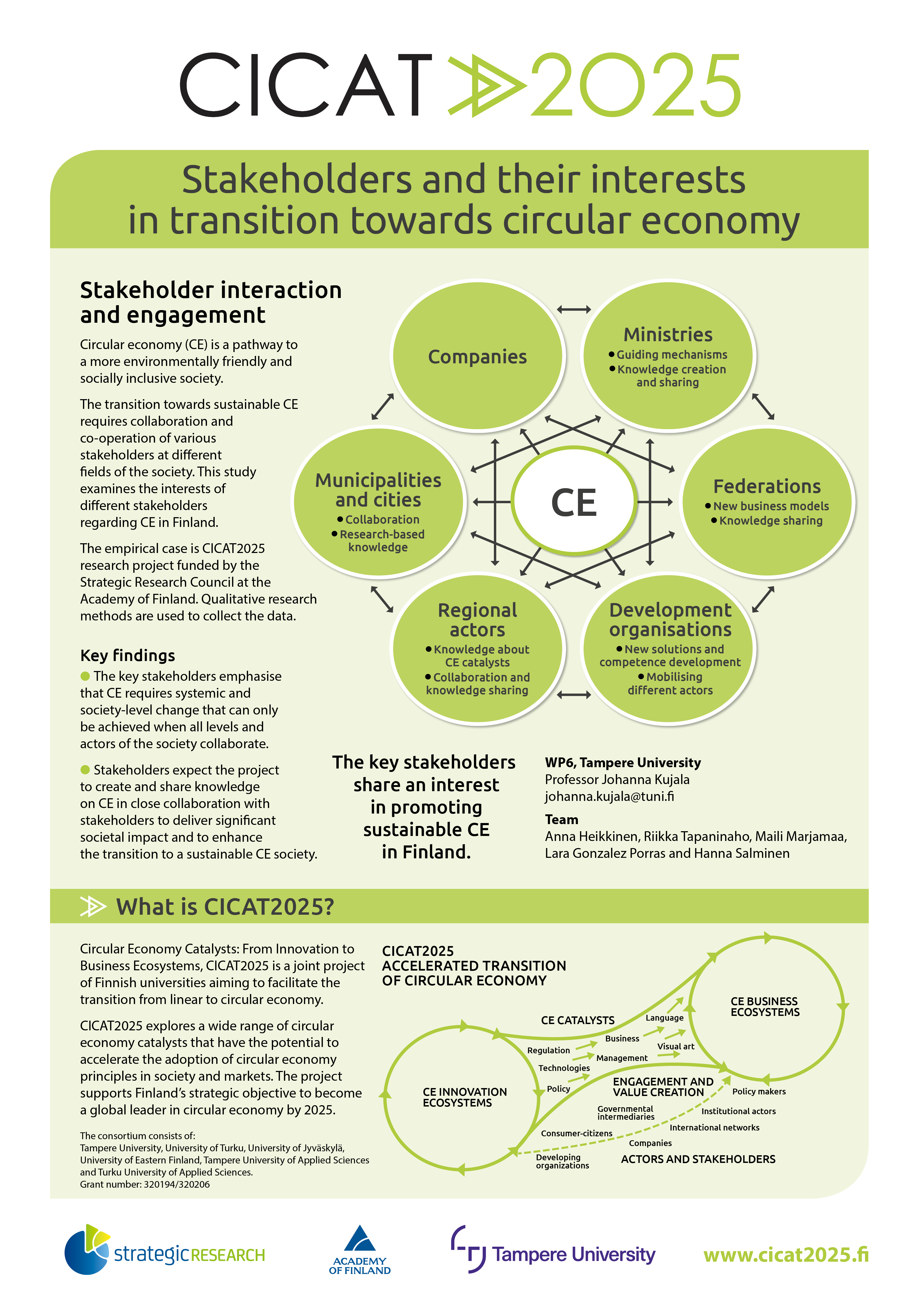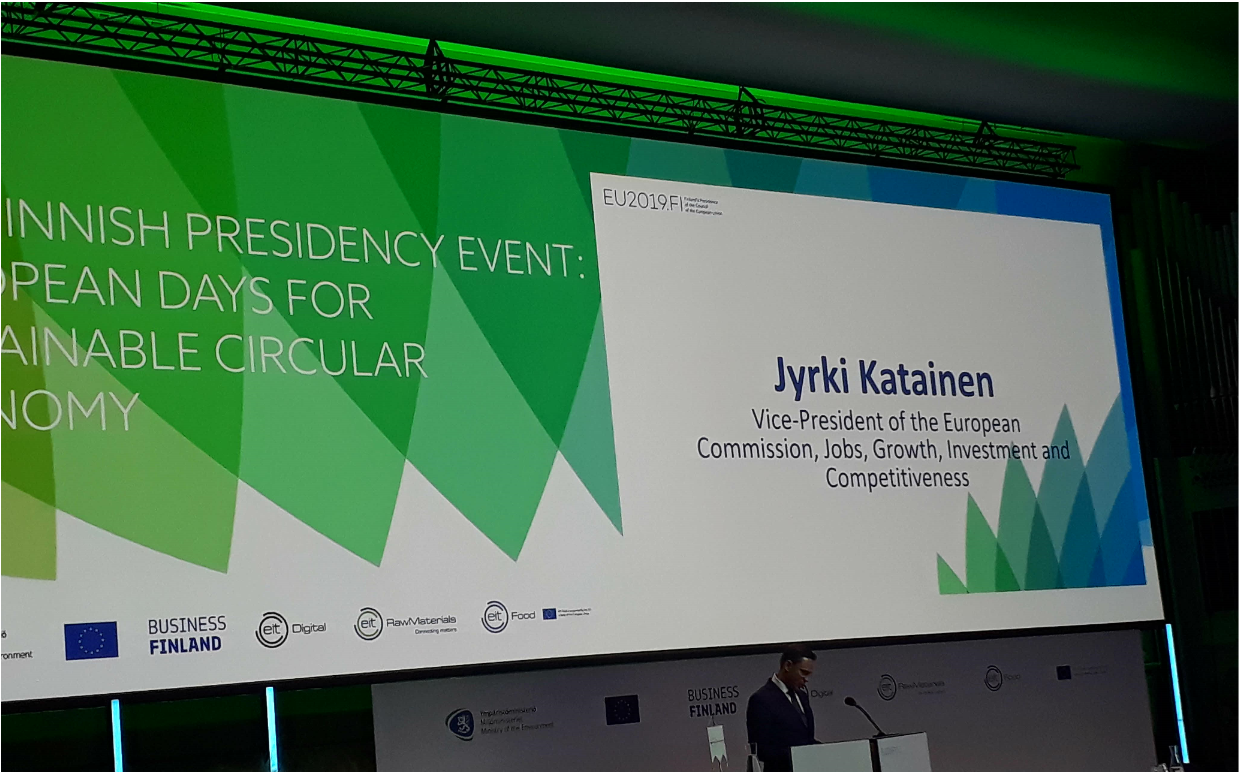Sustainable future through co-operation: CICAT2025 participated in the European Days for Sustainable Circular Economy

One of the events during the Finnish EU Presidency, the European Days for Sustainable Circular Economy conference, took place in Helsinki on 30 September – 1 October 2019. The purpose of the conference was to promote the transition to low-carbon, climate-friendly circular economy around which sustainable societies and industries may be built. 800 participants from 40 countries represented universities and research institutes, businesses, politics, organisations, public administration and the EU. The event offered exciting presentations on circular economy solutions and research, panel discussions, and broader visions of what should be achieved in this area on the EU level.
The main message of the conference was that a sustainable circular economy requires a change of attitudes, images, processes, business models and regulations as well as collaboration between different actors based on comprehensive thinking. All this is needed because we have reached the limits of our planet’s sustainability. It is also time to move towards circular economy politically because the EU is determined to take a leading role and implement the circular economy when it cooperates with non-EU countries. The circular economy is thus high on the EU’s list of priorities and several funding instruments have been set up to support this goal.
The will to make the transition into circular economy is strong, but in many respects, we are still taking the first steps towards a sustainable circular economy.
Politicians are able to ensure that the plans to promote circular economy fall on fertile soil, but they cannot create it on their own. Systemic change requires that companies, research institutions and citizens challenge the logic and principles of the linear economy. We need a common vision of what kind of future we want to create. Technological revolutions and innovations are supporting the transition towards a sustainable circular economy.
The CICAT2025 project featured prominently in the conference. The project had its own exhibition stand with a poster on co-operation with stakeholder groups, which invited participants to talk with our researchers. The main attraction was the AR videos the CICAT2025 project launched at the event. The project invited participants to try out the augmented reality videos available at our info points. In her conference presentation and subsequent panel discussion, Leena Aarikka-Stenroos, the director of our consortium, highlighted the importance of the catalysing aspect of our project and the role of science and research in bringing about systemic change.

As a whole, the conference provided a rich set of speeches by researchers and experts. Particularly interesting was the presentation by Ester van der Voet from Leiden University who talked about urban mining, ie the city as a mine. Growing cities are nexuses of materials recovered from nature because materials are brought into and consumed in cities. Hence, cities form huge urban mines whose material reserves can be collected and utilised. For example, discarded wires and pipes under the ground, discarded electronics, and construction waste form reserves that may eventually play a major role in the global resource shortage. It has been estimated that in the production of aluminium for instance, the use of virgin materials will account for one third and the reuse for two thirds of the total in the 21st century.

The picture is taken from the live stream of the conference
Leen Gorissen, the founder of the Studio Transition consultancy, gave inspirational examples of new innovations in the circular economy that have been made by using biomimicry. For example, the biotechnology company Sharklet Technologies is developing coatings that have a microscopic surface texture based on shark skin. This antibacterial formula can be used in dressing wounds, for example in hospital environments. Moreover, PureBond uses waterproof and non-toxic super glue in the plywood industry. The glue has been developed by getting inspiration from clams and imitating them. According to Gorissen, the nature has millions of years of product development experience and the circular economy should take advantage of the natural intelligence and diversity around us.

Our main main impression from the conference was that the will to make the transition into circular economy is strong, but in many respects, we are still taking the first steps towards a sustainable circular economy. The characteristics of different sectors, investment horizons and the speed of change must be taken into account and no singular solution exists. Catalysts that accelerate the change are thus needed. In his closing words, Jyrki Katainen, Vice-President of the EU Commission in charge of competitiveness who is soon to become President of the Finnish Innovation Fund Sitra, emphasised that the circular economy will be implemented in a spirit of collaboration. “Let’s make it happen!”
Maili Marjamaa
Hanna Salminen
Riikka Tapaninaho
Johanna Kujala
